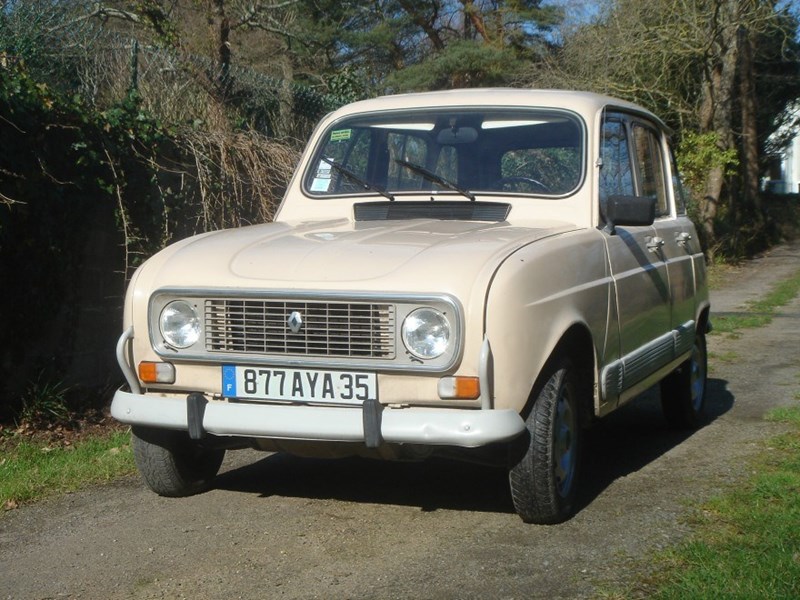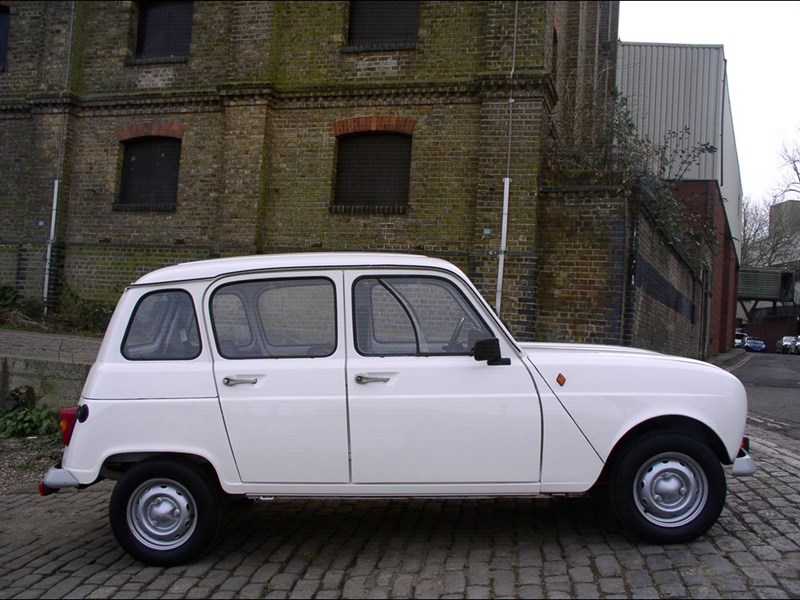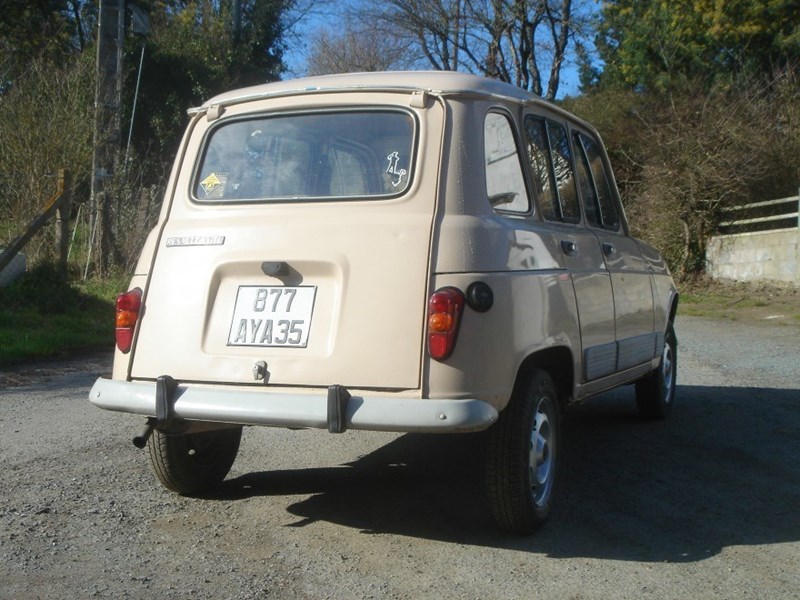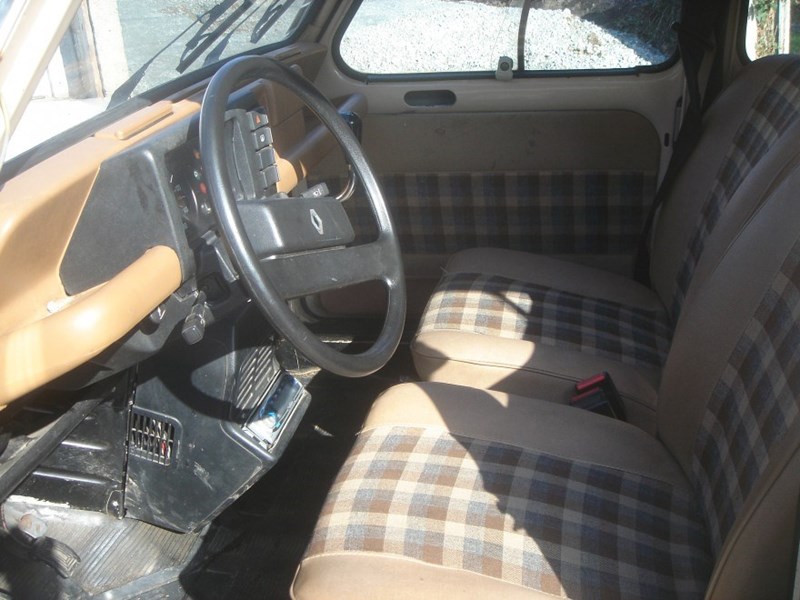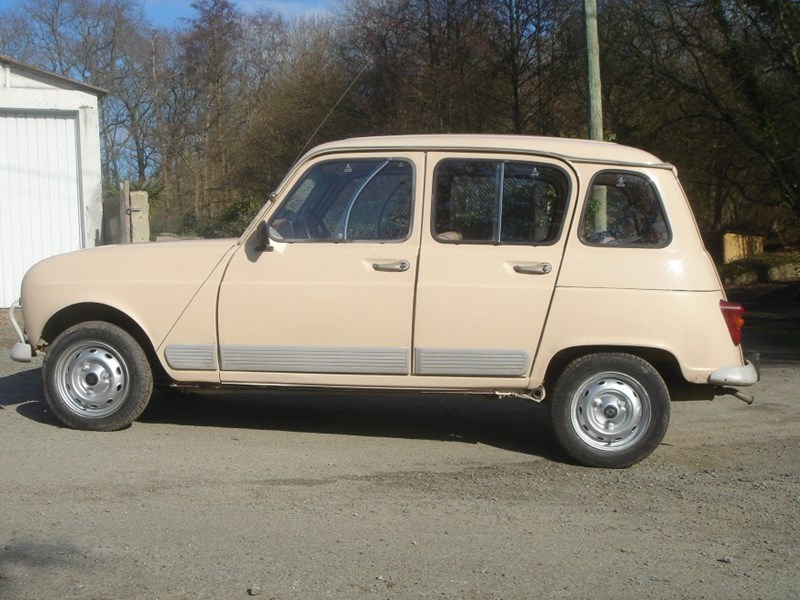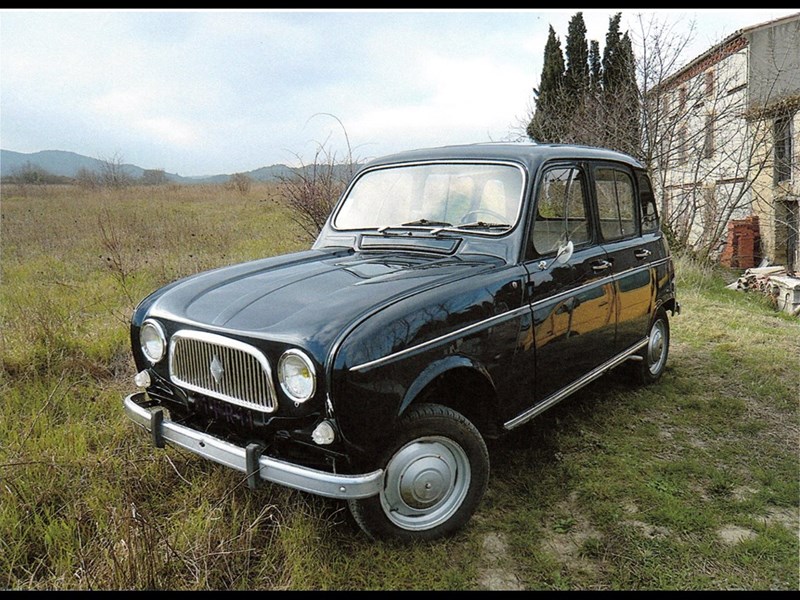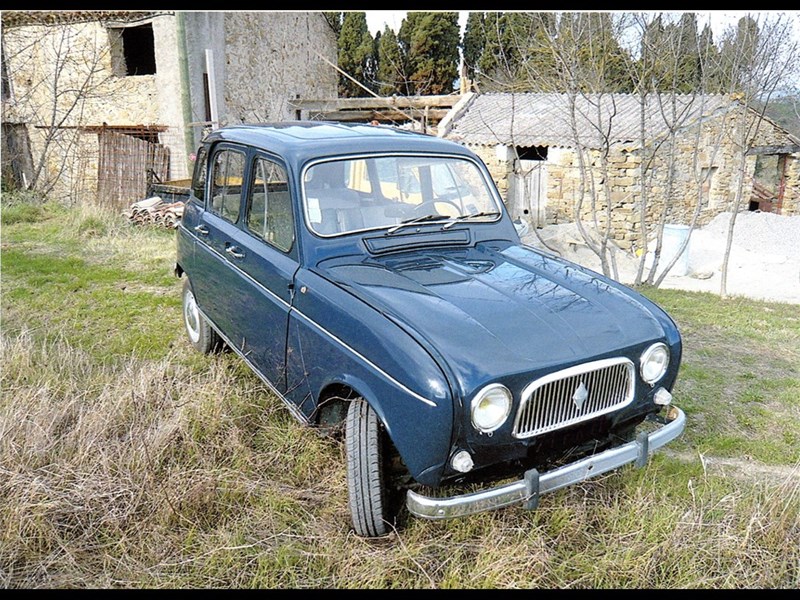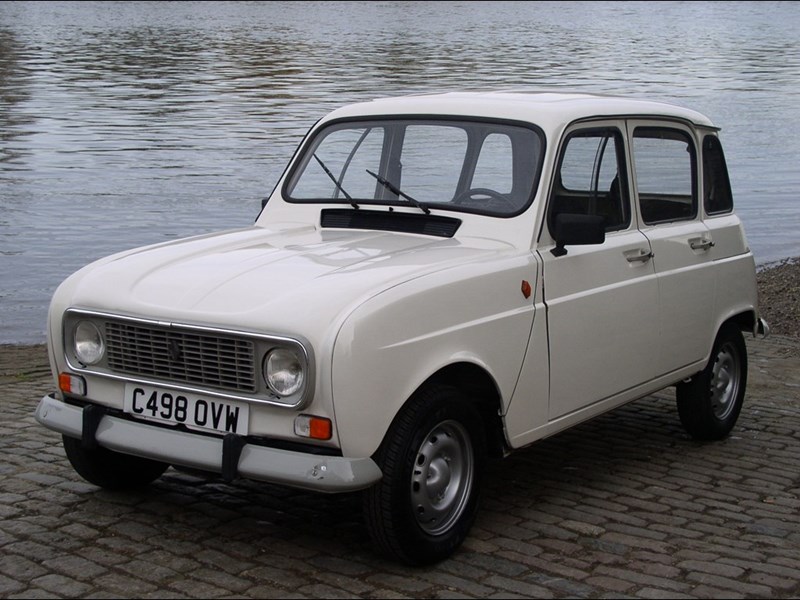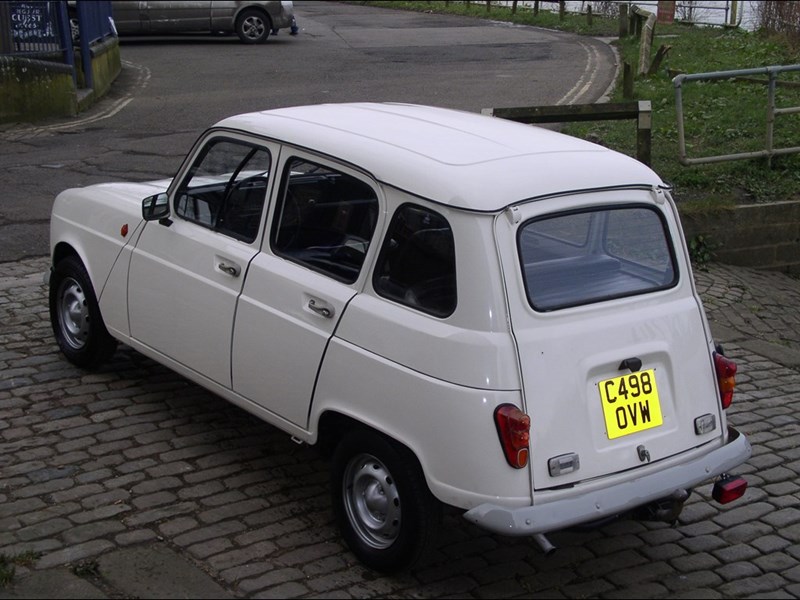This practical, individual French icon is a fun classic to own - if you buy wisely.
With the cheapest driveable examples starting around £2000 now's the time to grab this boxy, basic and friendly little car. The Renault 4 was all about cheap practicality and its just as at home fulfilling that role today as it was when launched in 1961. Perfect and early cars are asking £10,000 but just £5000 gets a nice 4 that you can use every day.
The platform chassis design for Renault's first front-wheel drive car arose from the need to include a van model in the range. Renault planned to sell, or rent out, interchangeable plastic van and pick-up bodies - and from this arose a cubic car with a flat floor, large doors and low rear sill. It's precisely this load-lugging versatility that's at the heart of their appeal today.
Nicknamed 'Quatrelle' (ie, 4L) by French owners, the Renault 4 proved extremely successful and was produced or assembled in 27 other countries as far afield as Australia, South Africa and the Philippines.
One curiosity is that the car's wheelbase is shorter on the left than the right because the rear wheels aren't mounted directly opposite one another. This allowed a simple rear suspension of transverse torsion bars located one behind the other that offered great handling and roadholding. It's a fun car to fling around, with small but willing engines making up in noise what they may lack in performance.
The 4L models from 1961 to '67 have the best classic looks, but a three-speed gearbox and six-volt electrics aren't best suited to modern everyday use - especially when coupled with poor parts availability. The post-1968 TL model has the more useable 845cc engine, four-speed gearbox and 12-volt electrics. Although lower-geared than later models and less powerfulthe quality of interior and exterior trim is superior to that of later cars.
The GTL produced from 1984 to 1992 is what you're most likely to find for sale today. The 1108cc engine makes it practical in modern traffic and, provided you can stand the noise, it'll happily do 70mph on the motorway and return about 40mpg.
The Renault 4 has been adopted by those who want a classic car that's inexpensive, easy to maintain, fun to drive and above all practical as an everyday car. Frankly. it's so simple there's little that can go wrong. But there are a few vital checks to make.
VITAL STATISTICS
Engine: In-line 4cyl, petrol, ohv, 603, 747, 782, 845,956, 1108cc
Power: 22.5-34bhp, 41-55lb ft
Transmission: Three- or four-speed, front-wheel drive
Brakes: Drums or discs front, drums rear
Top speed: 59-78mph
0-60mph: 21-22.6 sec
Fuel consumption: 40mpg
WHAT TO LOOK FOR
Bodywork
Front and rear wings trap moisture so examine them closely. The wings all bolt on and replacements are available. Rust spreads from the top of the outer wing to the inner one but they too bolt on. A repair panel is available for the top inner edge.
Rear wings rust along their top horizontal seam because they were assembled first, then painted - leaving this seam exposed to water. If a replacement rear wing is installed but the seam isn't replaced, the body will rust along the top edge of the wing line. Repair sections are available but will require a talented welder. New bonnets and doors can still be found in France and Belgium.
The bonnet is a large, flat piece so any damage should be obvious. Look for rust, particularly on the lower edge from trapped moisture and neglected stone chips. Windscreen seals trap water, leading to corrosion below the base of the windscreen.
Examine the sills, especially directly in front of the rear wheels. Any bubbling or holes means there's worse below and usually rust in chassis suspension mounts.
Chassis
The biggest trouble spot on the Renault 4 is its chassis, particularly where the rear suspension attaches - corrosion hides in the double-skinned section just to the rear of the inner suspension mounting. It's obscured by the suspension damper and only visible from under the car. If you catch it in time the area can be patch-panelled, but the job should only be done by a specialist. Although a £250 patch repair will get the car through an MoT, the rot will return and the area behind the mounting will likely still be rusty.
Poor repairs using thicker metal can affect rear wheel alignment, leading to rapidly wearing rear tyres. The correct procedure involves taking out the rear suspension, fuel tank and much of the interior then welding in flush new metal.
It's less usual to find rust in the outer suspension mountings - directly in front of the rear wheel - but this area is hard to repair with the body in place. Rot here tends to start from the top, so any corrosion in the wheelarch immediately above the mounting is a clue to condition. The outer section of the chassis is visible just inside the sill panel, and if the panel is wavy or bubbly, or shows signs of cracking or rusting from inside, repairs are required. Brand new galvanised chassis are now available at around £1400. Although floorpans rust, rear seats are easy to remove for a proper inspection; corrosion gets in between the rail and the floorpanand the worst if often hidden. Check carefully around the sill in front of the rear dogleg. In the front, get the floormats up and have a good probe about inside. Patch repairs are relatively straightforward.
Engine and gearbox
All engines are generally hard-wearing. The cooling system contains anti-freeze that was intended to last throughout the car's life - provided that ambient temperatures below minus 40 degrees C are avoided. The problem is that the corrosion inhibitors will be used up after two years and the cooling system clogs up with mucky silt, leading to overheating. So it's recommended that anti-freeze is kept at full strength and replaced every other year, or the engine liner seals deteriorate. This is especially crucial on cars recently imported from a warm climate.
Oil and oil filter changes should be undertaken every 5000 miles. Check the condition of the engine by removing the oil filler cap and examining the valve gear - any sludgy 'mayonnaise' means oil in the water and an engine rebuild - simply changing the cylinder head gasket won't fix it. The head should always be twisted off - not pulled straight up - to prevent damage to liners. Timing chains rattle but rarely fail. Engines can run on unleaded but using an FBHVC-approved additive is strongly recommended if you're doing motorway miles - and 1108 engines like using super unleaded, especially during hot weather.
A heavy or sticky clutch is likely caused by the shaft between the external clutch lever and the release fork seizing, which leads to the release bearing rubber against the clutch backplate, or the bearing seizing. A squirt of penetrating fluid should free it.
PArts for the 845cc engine are particularly in demand because pistons are shared with the Austin 7, whose owners have hoovered up most remaining stock. Parts specialists agree that original/new-old-stock parts are better quality than modern reproductions.
Interior
Vinyl seats are generally good for about 80,000 miles and replacement materials are rare. GTL models had cloth seats, which aren't as strong as the vinyl ones. However, driver and passenger seats are identical so can easily be swapped.
Replacement GTL seat covers, door cards and floor mats can all be obtained from French suppliers. The trim on early (pre-1978 GTL) cars is very difficult to find now, even secondhand, and tracking down seat frames can also be a real struggle.
Only post-1972 cars have mountings for rear seatbelts. Check the belts carefully - alarmingly, the reinforcement section on the outer edge is a common rust trap.
Suspension
Rear dampers mount horizontally and only specific Renault 4 dampers should be used because the rebound rate is about twice the compression rate. Fitting normal dampers will likely result in air bubbles around the valves, preventing the dampers from damping and leading to wheel vibration.
Any damage repair or adjustment to torsion bars is best left to an expert, because it requires a specialist tool.
Axles
Check the condition of the driveshaft gaiters - they can split, allowing dirt contamination and causing premature wear. The handbrake mechanism on the TL attaches using caged nuts that can work loose over time. Welding on captive nuts fixes the problem but it's difficult without a lot of stripdown. New caged nuts and threadlock usually solve it.
Fitting a new clutch means unbolting the steering rack - ensure both bolts are replaced because it's not unknown for re-used bolts to later shear off in use.
